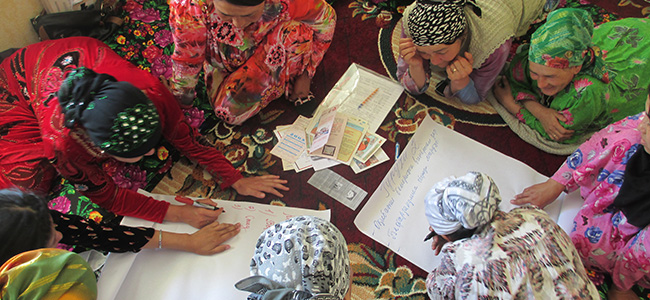Tajikistan
Tajikistan


The Republic of Tajikistan is one of the five countries of Central Asia. The country borders Uzbekistan, Kyrgyzstan, China and Afghanistan. The most important Tajik cities are the capital Dushanbe, and, among others, Khujand, Kulob, Kurganteppa, and Khorugh.
The population of Tajikistan is estimated at about 6.5 million people. The country has no access to the sea. Its area reaches 143,000 square kilometers. 93% of Tajikistan is mountainous – more than 50% of the country lies at an altitude of over 3000 meters, and only 7% of its area is situated at an altitude of less than 1000 meters. The country has a warm temperate continental climate, which varies greatly depending on the elevation and exposure.
Recent history
The collapse of the dictatorship of the Communist Party in August 1991 allowed the proclamation of independence of Tajikistan on September 9th 1991. In December 1991, the country became a member of the Commonwealth of Independent States and in 1992 of the United Nations.
After independence, the nation suffered from a devastating civil war which began in May 1992 when a Muslim coalition from the Karategin and Pamir regions rose up against the ruling elite, in which the people from the Khujand, Kulob and Hisor areas dominated.
Thanks to military aid from Russia and Uzbekistan, the war ended in victory for the government in 1997. During the time of ongoing warfare, the authorities began the privatization of agriculture, trade and small and medium-sized industry. In 1999, Tajikistan concluded a treaty of alliance with Russia.
According to the constitution of 1994, Tajikistan is a republic, and the head of state is the president (Emomalii Rahmon continuously since 1994).
Tajikistan is one of the least developed countries in the world, which until 1991 was treated as a resource base for the USSR. It is estimated that the current standard of living is half of what it was during the Soviet rule. In 1997, the national income of the country fell to 30% of what it was in 1991, but since then has been experiencing slow growth (in 2006 it amounted to about 70% of the level of 1991).
Since independence, Tajikistan has been facing serious economic and social problems. Additionally, the civil war in the 90’s seriously complicated the situation, hampering the development of the country. Most of the structures created at the time of the Soviet Union have been degraded or reorganized.
Threats
Because of its geographical location, Tajikistan is constantly exposed to the threat of natural disasters. The most common disasters in the country include avalanches, landslides, floods, droughts and earthquakes. The occurrence of natural disasters is also related to climate change associated with global warming.
The glaciers in the Pamir Mountains, which are the source of water for the major rivers in Central Asia, have been quickly melting. The threat of natural disasters in Tajikistan goes hand in hand with the weakness of many elements of the state administration, which often lacks the resources and capacity to implement and coordinate assistance in the event of major disasters.
The Tajikistan’s southern regions are the least-developed. This situation is caused by several factors including the warfare in 1992-1997, which resulted in the destruction of factories and processing enterprises; the overall low level of education due to the low standards of teaching and lack of educational and cultural opportunities; high prices of food and gasoline, and of agricultural equipment and fertilizers.
The most important problem facing the region is the mass migration of men to Russia. Whole generations of Tajiks living in the country depend on the money sent by their migrant relatives. It is estimated that diaspora remittances from Russia account for approximately 30-40% of the country’s GDP. Migrant men leave their wives and children behind.
Sometimes, money sent by a husband is received by a wife’s in-laws who ration out the money. Often, men find new families in Russia and break contact with their Tajik relatives. In such cases, women have to start working to support themselves and their children.
The Shahrtuz district has great potential for agricultural development because of its warm climate, irrigation system, ability to lease land from the state, and private, large area gardens owned by families.
Thanks to these determinants, PCPM and its local partner organization Chashma may jointly implement a project supporting the self-employment of women who, with some professional assistance, can prove to be entrepreneurial and self-reliant.